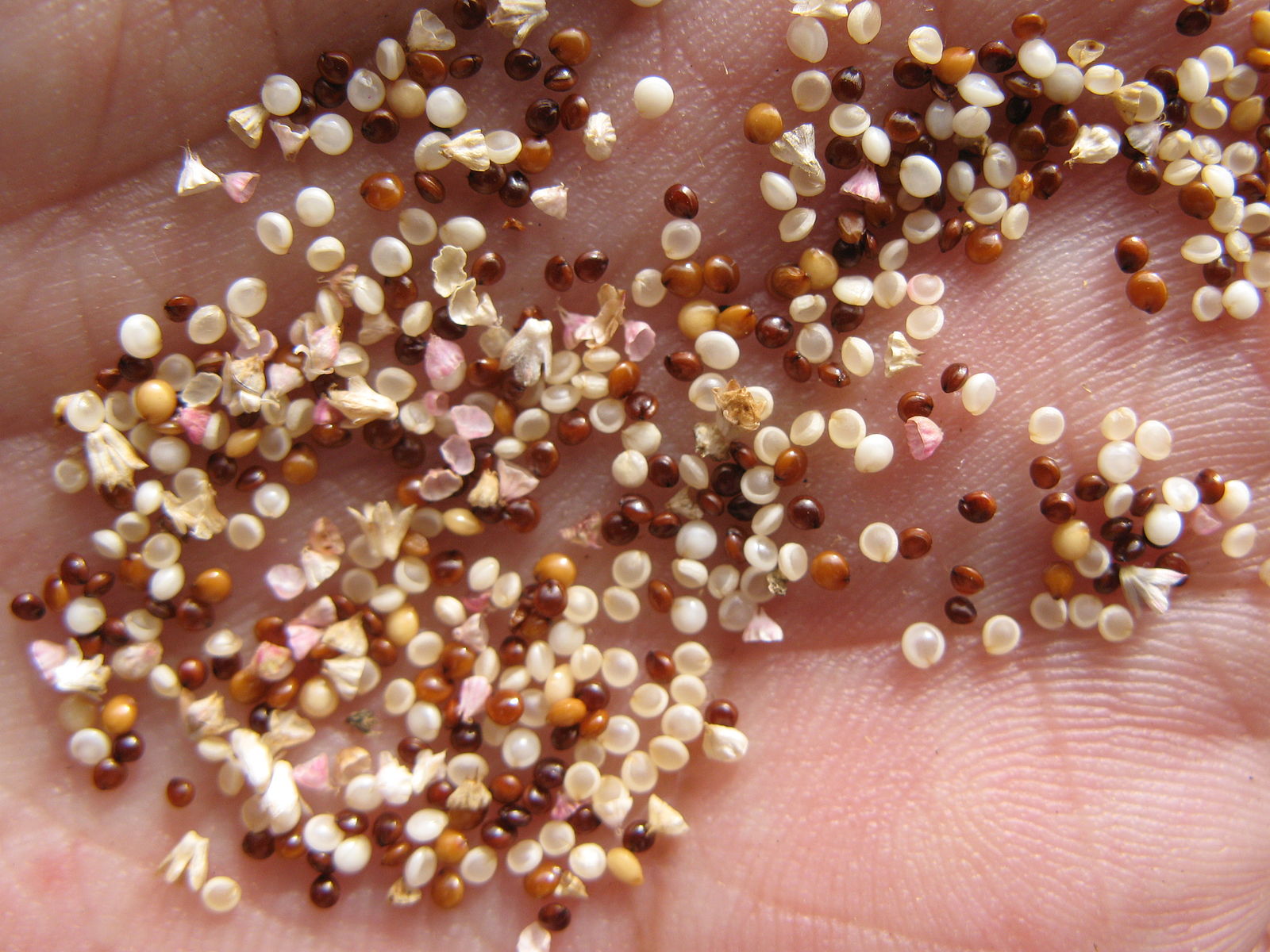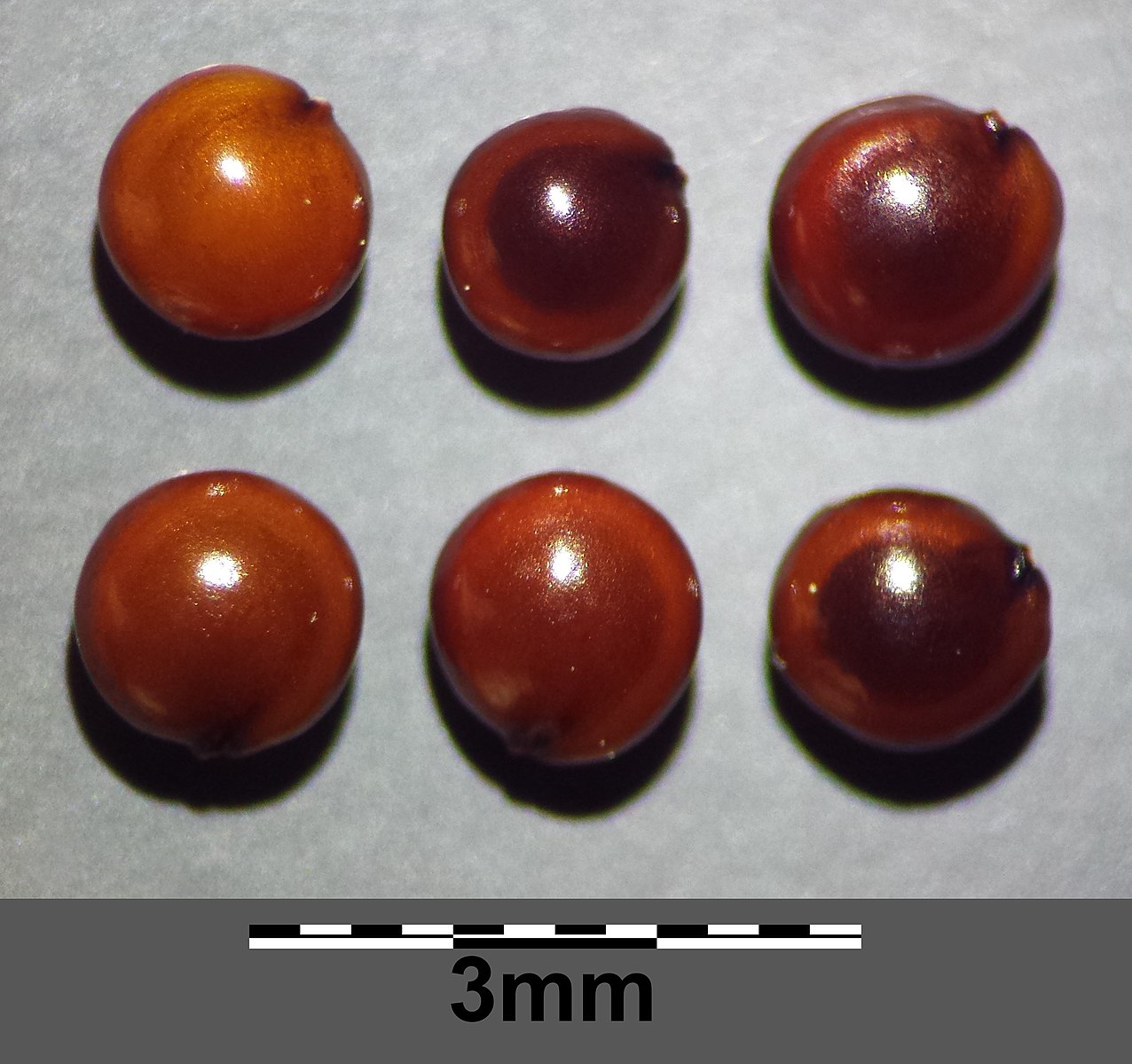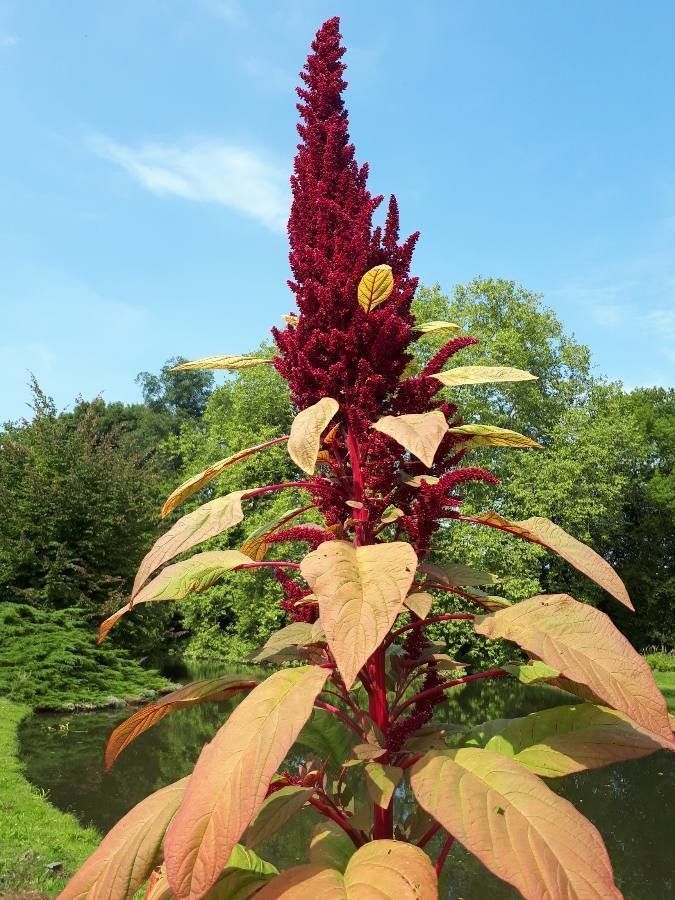
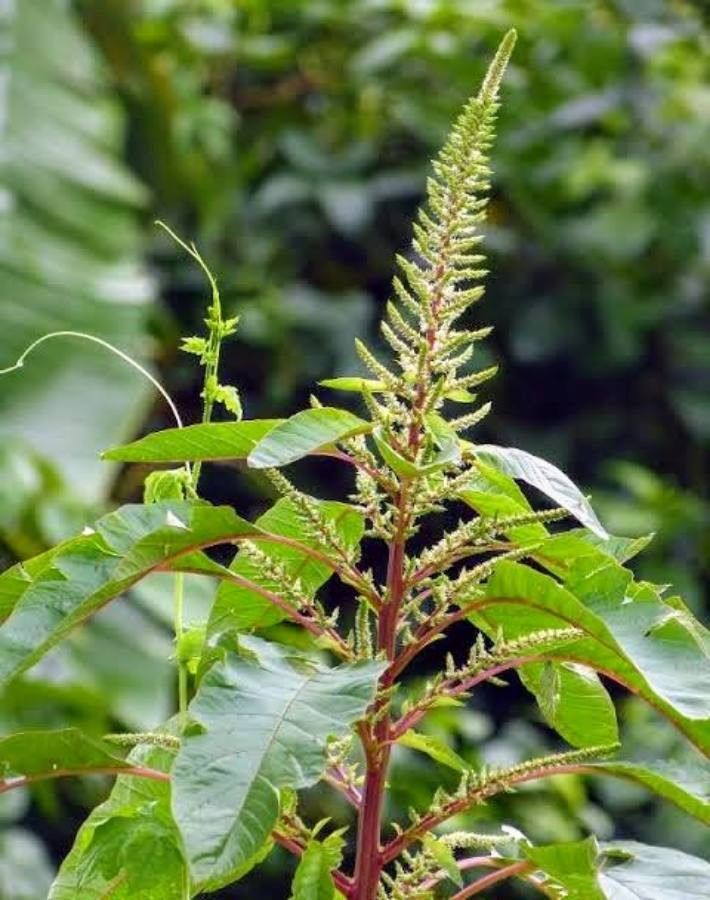
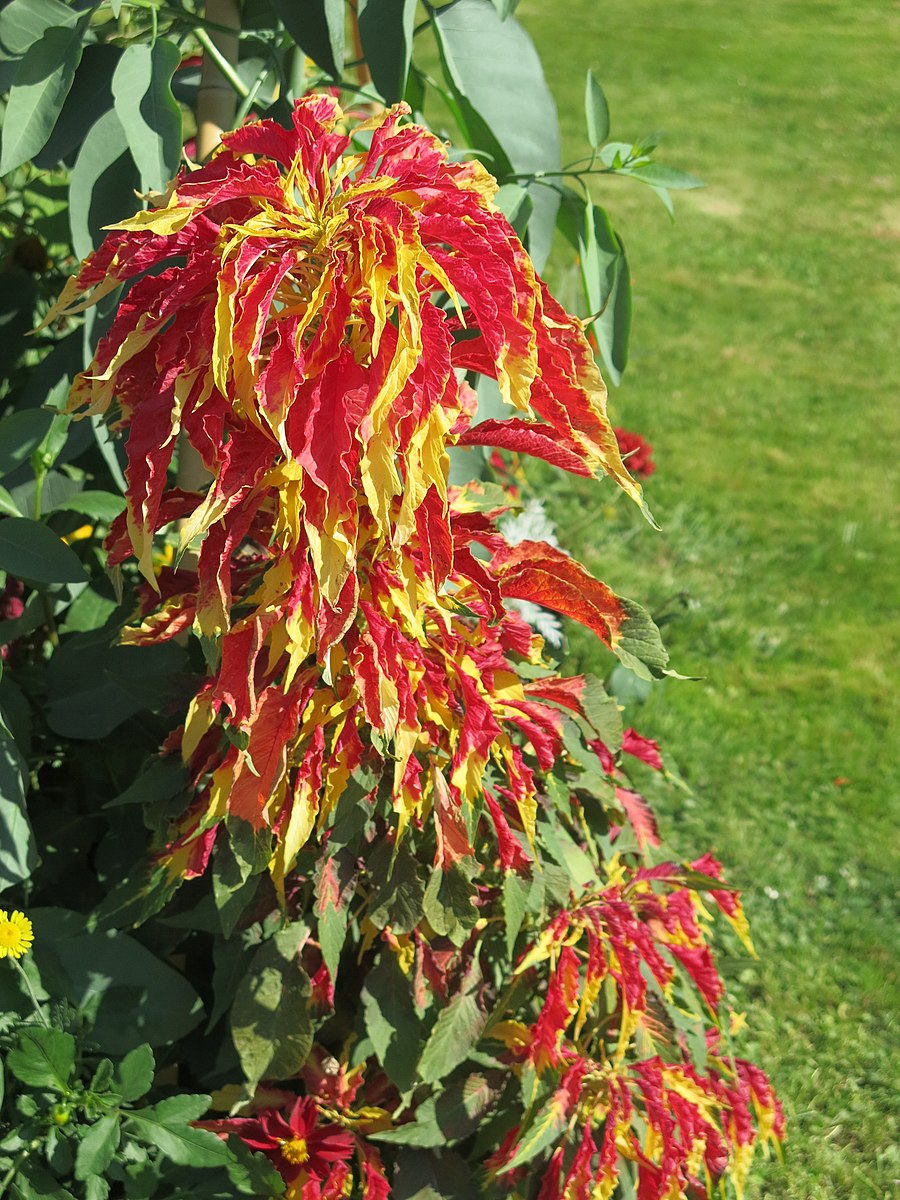
|
Common name |
Scientific name |
Life cycle |
Sexual system |
Primary pollination method |
Inbreeding/ |
Min. isolation distance |
Min. population size for variety maintenance |
Min. population size for genetic maintenance |
Dormancy |
Number of seeds per gram |
Average storage life |
Comments |
| Amaranth (English), Amarante (French), Amaranto (Spanish) |
Amaranthus spp. (Amaranthaceae family) | Annual or perennial | Monoecious (but hermaphrodite self-fertile flowers can be found) and more rarely dioecious (i.e. Amaranthus palmeri) | Wind | Primarily outbreeding | 200-400 m | 5-25 | 50 | None for most grain amaranth seeds | ~1500 | 5 years | Some varieties will easily cross with one another (i.e., A. caudatus with A. hypochondriacus, and varieties within the A. tricolor species) |
Scroll horizontally over the table to view it in its entirety
Amaranth has a long history of cultivation in pre-Hispanic times among Aztecs and their tributary communities. Widely cultivated for its grain in a quantity very similar to maize, it was considered as a sacred food and used in rituals and sacrificial ceremonies throughout Mesoamerica. In Asia, varieties of Amaranthus tricolor have been grown as a green vegetable since the beginning of recorded history.
The leaves of all amaranth species are rich in calcium, vitamin A, vitamin C, with moderate levels of folate, iron, magnesium and potassium. The seeds are very nutritious and are rich in lysine, an essential amino acid that helps the human body to create collagen in bones and connective tissues and to convert fatty acids into energy through the production of carnitine.
Growing recommendations
Most grain and leaf amaranth varieties can be cultivated from the tropics to the temperate zone. They do best in full sun, partially shaded locations, and a moist but well-drained soil with a neutral to acidic pH. They will grow easily in poor soils, have moderate needs for water, and don’t require fertilizer. The plants indeed utilize a photosynthetic pathway known as C4 carbon fixation, which largely prevents photorespiration and thus increases drought tolerance. Seeds are sown outside about 10 cm apart and covered lightly. Germination usually takes place within 8 to 10 days. Plants are thinned out as they sprout to a spacing of 25-30 cm. Seeds can also be started indoors and will germinate best at 20-24° C. Grain varieties will set seed over a 100-120 days period while leaf varieties will set seed faster.
Common diseases and pests
- Fungal diseases: Anthracnose (Colletotrichum gloeosporioides), damping-off (Rhizoctonia spp.), wet rot (Choanephora rot).
- Insect pests: Pigweed weevil (Hypolixus haerens).
Pollination, crossing, and isolation
Inflorescences are in the form of a large panicle that varies from terminal to axial, color, and sex. The tassel is either erect or bent and varies in width and length depending on the species. Flowers are radially symmetric and either hermaphrodite or unisexual with very small, bristly perianth and pointy bracts. They vary interspecifically from the presence of three or five tepals and stamens.
Both grain and leaf amaranth varieties are wind-pollinated and can be either monoecious or dioecious. While cross-pollination is possible through insects, it remains rare as the flowers are small enough to not be of interest to pollinators. Given that amaranth pollen is small and light, greater isolation distances or the use of natural hedges will be required to ensure seed purity, especially in the presence of wild varieties around (often prevalent in some places). Based on your environmental situation, the isolation recommended distances might therefore need to be revised and adapted.
Crossing can also be prevented by covering each flower head with a paper bag. To avoid inbreeding depression that frequently result from self-pollination, plants should be grown close to each other in small clusters and flowers heads covered all together before they open. The wind will help to move pollen from the male to the female flowers. In the absence of adequate wind, vigorously shaking the plants each day will produce a similar effect and ensure that they are pollinated. The bag should be left in place until all the heads have matured and the seeds ready to be harvested.
General seed saving guidelines (harvesting and processing)
Amaranth seeds are encased inside capsules (referred to as unilocular pixdio) that open at maturity. Seeds are circular, measure between 1 and 1.5 mm in diameter, and range in color with a shiny, smooth seed coat. They will mature gradually and unevenly along the stalks. While the seeds can be regularly harvested as they mature on the heads by shaking them into a bag, it is much more convenient to harvest the entire crop when most of the seeds are ripe. The heads can be left to dry further on a tarp, in a protected area away from the direct sun. When fully dry, the heads are rubbed by hand inside a bowl to separate the small seeds. Wearing gloves is recommended when handling them, as some species feature tiny thorn and prickles that can be sharp. If a greater quantity of heads needs to be processed, those can be laid down on a tarp and covered by another one, then trampled over or beaten with the help of a stick. The dried threshed seeds are then placed inside a bowl then swirled around several times to remove debris. Any smaller particles of dirt or other chaff material can be removed by using a fine mesh screen. If necessary, winnowing is also an option but must be done with care as seeds are very light.
Amaranth seeds will remain viable for an average of five years when stored under optimum conditions.
